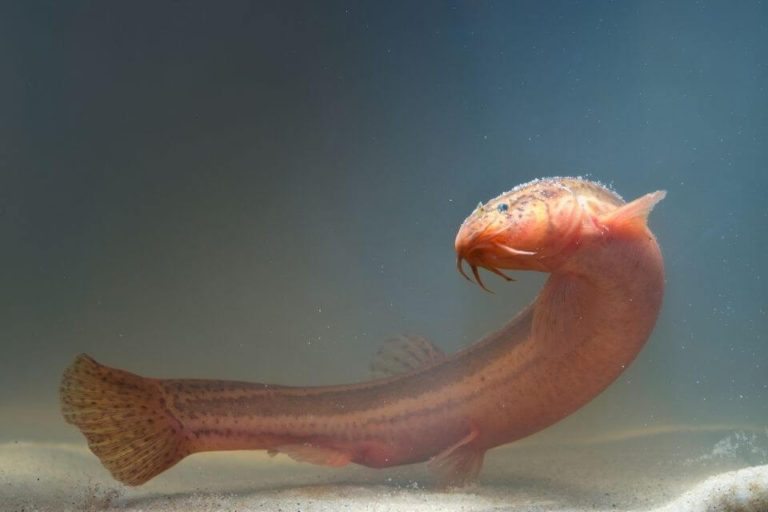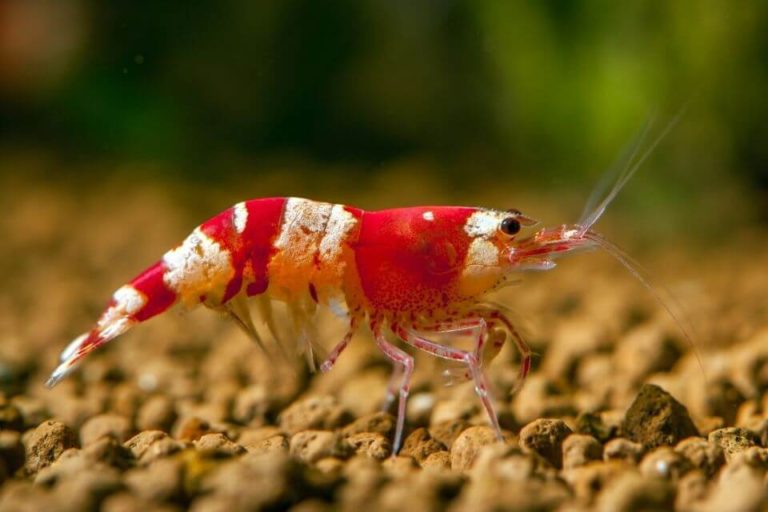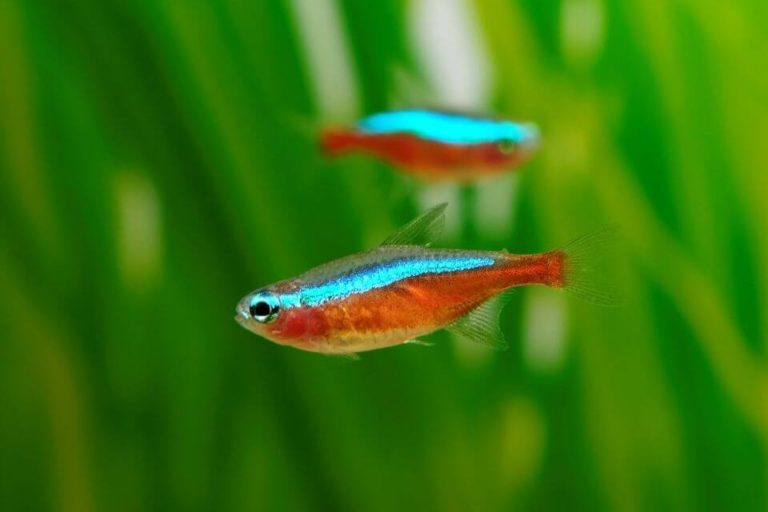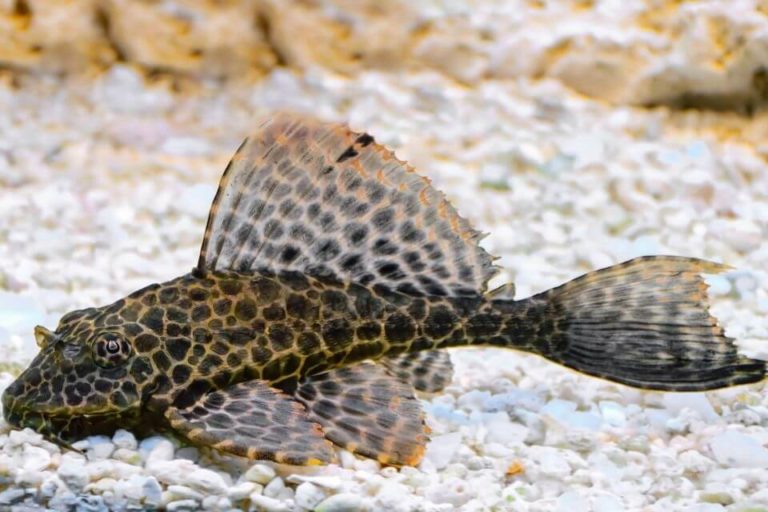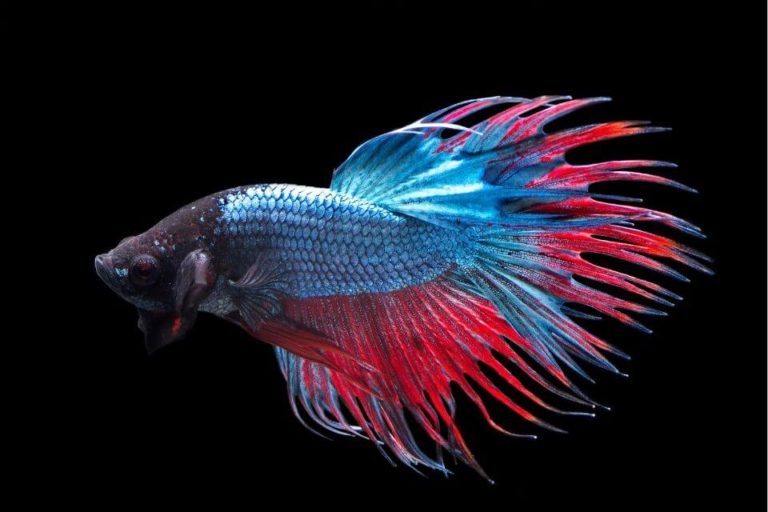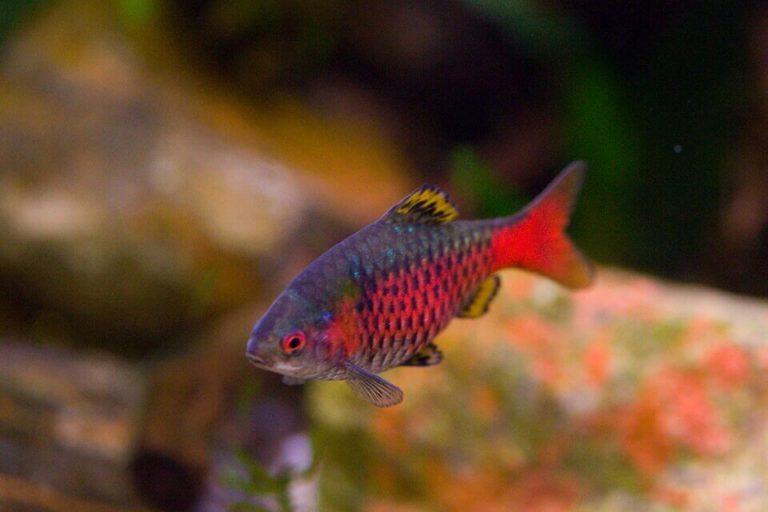Buenos Aires Tetra Care: Size, Lifespan, Tank Mates and Diet
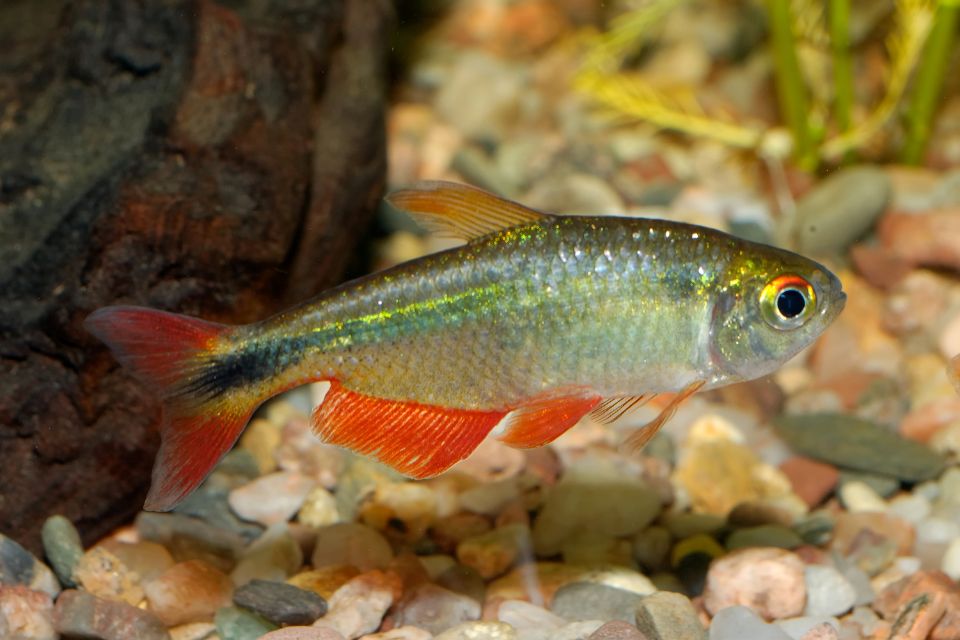
Buenos Aires Tetra is a mid-size freshwater fish and a sought-after species for aquariums. It’s a vigorous and active variety among the Tetras but is less demanding and low-care.
This Tetra species isn’t overly flashy like most aquarium fish but is subtly attractive with its nuanced color combo and quirky nature. They love the company of its kind, dwell comfortably in schools of six to ten, and are somewhat aggressive to smaller types.
If you’re planning on adding this fish to your freshwater aquarium, a proper acquaintance goes a long way toward raising it comfortably and healthily. It can be kept in a small tank such as a 20 to 30 gallons tank.
This care guide offers an insight into the ideal tank mates, temperament, and breeding and feeding requirements of the Buenos Aires Tetra fish. Therefore, please read on to discover more about keeping this fish.
Species Overview
Buenos Aires Tetra (Hyphessobrycon anisitsi) is native to Argentina and derives its name from its capital, Buenos Aires. However, it still traces its roots back in southeast Brazil and Paraguay but is predominant in Argentina’s Rio de la Plata and other lakes, streams, and rivers.
Most Tetra species isn’t listed on the IUCN red list as endangered, including the Buenos Aires Tetra fish.
It was discovered in 1907 by Carl H. Elgenmann, a renowned ichthyologist and freshwater fish enthusiast in South America. Thanks to their dynamic nature and hardiness, they’ve ever since earned their spot among the most favored freshwater aquarium varieties.
The Buenos Aires Tetra fish is among the vast pool of over 150 tetra species, including the X-ray, Congo, and Cardinal tetras.
The Buenos Aires Tetra fish is less demanding in care and maintenance, making it a favorite among aquarists. However, it can be somewhat quirky and intimidating to other fish, especially when they co-inhabit with petite species.
This fish gets easily stressed when alone and is more comfortable and confident in schools of five to ten. It also isn’t nocturnal but requires about 12 to 14 hours of light for a healthier circadian rhythm.
Buenos Aires Tetra Size
The Buenos Aires Tetra size grows about 3 inches long (7.5 centimeters) and is among the largest Tetra species worldwide. However, giving it proper care during its early years it grew to about a centimeter or less long.
It also measures approximately 1.5 inches wide, including the length of its fins.
Due to its bigger size compared to other freshwater aquarium fish, this fish can be incredibly intimidating. However, the female Buenos Aires Tetra fish is marginally bigger, rounder, and broader.
It can grow more extensively in their natural habitats and a less constrained environment, perhaps a few inches wider.
Buenos Aires Tetra Lifespan
Buenos Aires Tetra’s life span varies between 4 and 6 years. Some specimens can live up to a decade, but that’s only possible in a less constrained and controlled environment.
However, that’s not far-fetched if you can replicate its natural habitat, providing it with healthy food, clean water, and plenty of oxygen.
Poor maintenance and care reduce its lifespan and is less likely to live long. Despite its undemanding nature, the Buenos Aires Tetra fish is susceptible and can quickly become stressed.
Therefore, it’s best to ensure that its surroundings are more peaceful and its tank mates are less aggressive to enable it to live longer.
Appearance and Color
The Buenos Aires Tetra fish isn’t as flashy as other Tetras with the knack for appealing to the eye. However, its subtle color combinations and the dominant silver shimmer give it a unique and beautiful glitter against the aquarium lights.
This coloration differs depending on their genders, with slight variation in hues on the fins. Telling this fish apart from other tetras isn’t some leg work.
That’s because of their unique diamond-shaped dark spot near the caudal fin, extending and fading towards the head.
Female Buenos Aires Tetras are dingier than males; a unique characteristic to help you tell them apart if you’re a seasoned aquarist.
However, their general tinges are almost similar, with a silvery sheen and a blue line across their bodies horizontally – from the gills to the caudal fin. The pectoral, caudal, and anal fins are reddish-orange, and the dorsal fin is transparent.
Behavior & Temperament
The Buenos Aires Tetra fish is an incredibly active type and loves darting throughout the aquarium tank. However, it appears more confident and reserved when in a group of its kind than when alone.
This fish usually does fine in a community tank, but that sometimes makes it more aggressive and ill at ease with other freshwater aquarium fish.
It can constantly bully the smaller species and nip the fins of other ornamental fish, especially if their fins are more extensive.
This habit is known to be predominant when you underfeed them or when they feel threatened by their surroundings. The Buenos Aires Tetra fish isn’t aggressive unless you house it inadequately.
Therefore, ensure that you meet its needs in total capacity to maintain its adorable jumpiness. Before committing to caring for one, please ensure that you have the correct acquaintance to give it some proper care.
Buenos Aires Tetra Care
As mentioned before, the Buenos Aires Tetra fish is undemanding and won’t need too much attention if you feed it properly. Contrary to popular belief, novice aquarists can keep this fish without a hitch.
However, seasoned and well-versed aquarists are well-equipped to provide the best care since they’re more familiar with the fish’s behavioral patterns and responsiveness to their surroundings.
– Buenos Aires Tetra Tank Size
A single Buenos Aires Tetra fish can live in a 20 gallons tank capacity, but the demand for adequate spacing for groups should raise that to about 30 gallons. This fish loves darting around and favors more expansive spaces.
Smaller spaces make it more stressed and worsen its behavioral issues, making it more aggressive and unsettled. However, the most suitable tank size will depend on how many fish of this kind you’re putting.
More prominent schools will need vast spaces for exploring, darting, and swimming around.
Community tanks should be more significant to offer more roaming space and prevent attacks on other petite fish varieties.
– Tank Setup
First, the Buenos Aires Tetra fish doesn’t get along with living aquarium plants since it tends to eat them up. It has a taunted reputation to tear them up; therefore, only add a few plants they’d go easy on, including Anubias, Java Moss, and Java Ferns.
But that doesn’t mean your hands are entirely tied since you can still add a patch of green to spruce up the ambiance. Artificial aquarium plants can be ideal substitutes since they won’t tear them up.
Remember to add a soil substrate in the tank since this fish goes along perfectly with the idea.
The lighting should be standard since this fish won’t mind a few dark patches. It usually feels more exposed in extreme lighting conditions, and while it’s best known to be active, it can be somewhat shy.
It’s also pretty welcoming to clear waters free of debris and waste; hence gentle filtration will be okay. You may also get creative and spruce up their ambiances by installing caves and rocks.
A few driftwoods give them the shelter they need, and the fungi growing underneath can be savory for their appetites.
– Water Parameters and Testing
The Buenos Aires Tetra fish excels in slightly acidic waters, but neutral ranges can be okay. The ideal PH level should be between 5.5 to 7.0 to keep them less stressed.
This fish doesn’t favor hard water containing phosphates and nitrates, so it’s best to test it to determine its suitability. However, ensure to test the water to have hardiness of 12 dGH to 35 dGH.
Although this fish is hardy and highly adaptable, it’ll be unideal to assume that they’ll acclimatize to the condition automatically.
The temperatures also need to range between 71 °F to 80 °F. However, the good thing with this fish is that it exists in a wide temperature range without any issues.
So, whether or not you heat your aquarium this Tetra species won’t stress you much. This fish is hardy and adaptable to any freshwater condition. However, always have a test kit by your side, and be sure to conduct regular tests to determine the favorability.
– Suitable Aquarium Plants
The Buenos Aires Tetra would tear up virtually any plant in the aquarium, so it’s better not to include them. However, you can add a few plants if you don’t mind replacing them frequently.
You could resort to the sturdier plant varieties like:
- Vallisneria
- Java Fern
- Anubias
If these plants aren’t reachable, you can still include a few artificial plastic plants that they’ll attack without destroying.
Common Diseases and Prevention
A well-maintained aquarium won’t predispose your Buenos Aires Tetra to diseases. And although they’re hardy, these fish don’t have unbreakable body defenses either.
Bacteria and parasites do attack this fish, sometimes leading them to their death. Common diseases typical to the Buenos Aires Tetra fish include:
- Hexamitiasis (Hole-in-the-head disease) caused by flagellate protozoans
- Itch or White spot disease caused by Ciliate protozoan
- Fin rots caused by Flavobacterium and Pseudomonas
- Gill disease is caused by toxic chlorine and ammonia levels, poor filtration, overcrowding, and poor aeration
- Popeye disease (Exophthalmia) is caused by a variety of bacteria and parasites present in poorly maintained water
You can prevent these diseases by maintaining a clean aquarium and feeding your fish a balanced diet to build its body defense. However, remove any diseased fish from the aquarium before it affects the rest.
Be sure to change the water weekly, replacing it with fresh, clean water free of pathogens.
Buenos Aires Tetra Diet and Feeding
The Buenos Aires Tetra fish is omnivorous and feeds on pretty much everything. In the wild, this savors a diet of crustaceans, worms, insects, and a vast range of plants.
However, they still would munch on anything edible in the aquarium, so long as it fits their taste. That may include any live, frozen, or artificial food.
It’s better always to ensure that your fish gets a properly balanced diet to keep it healthy and strong. Therefore, high-quality flake food can be just enough since it contains all nutrients for perfect health.
You can feed your Buenos Aires Tetra fish several times a day, but be sure to give it what it can consume in minutes.
If you have a group of Buenos Aires Tetra fish in your aquarium, be sure to provide them with enough food, ensuring that it satisfies them.
Letting them go a day without feeding makes them aggressive and will attack other smaller varieties in a community aquarium. Besides, they nip other fish’s fins and cause mayhem.
Buenos Aires Tetra Male Vs. Female Difference (Gender)
A female Buenos Aires Tetra fish is usually marginally larger and fuller-bodied than males but appears dinger and less pigmented. Besides, they’re more expansive, with rounder abdomens bulging more as they approach their spawning phases.
Conversely, the male Buenos Aires Tetra fish is usually more hued and appears shimmy and bright against the aquarium lights. Their fins are typically bright red and sometimes yellowy.
Buenos Aires Tetra Breeding
The Buenos Aires Tetra fish is a prolific egg producer and can spawn up to 2000 eggs in a single round. But these eggs are much safer than the rest since they are usually consumed.
A separate breeding tank can be handy as your fish approaches spawning for extra protection and better supervision.
As always, ensure that the tank’s water is slightly acidic and at the right temperature. You can also include a few plants for the eggs to stick onto and a sponge filter for more safety.
Besides, an elongated and profound-depth breeding fish tank should be ideal compared to a wide and shallow one.
You can add a single female and two males in a single breeding tank. However, breeding them as a group is still possible as long as it doesn’t create tight spaces to move around.
Once the female spawns, the males fertilize the eggs, typically at dawn. Afterward, you can transfer the males to the main aquarium before they savor the eggs.
Buenos Aires Tetra Tank Mates
The Buenos Aires Tetra fish is pretty habitable with many fish but can bully the tinier ones. If you underfeed this fish, it has the propensity to attack the other more miniature fish or eggs of different species.
Therefore, be keen on the best tank mates to avoid chaos and mayhem. Ideal Buenos Aires Tetra fish companions should be fast, active, and slightly more extensive and include:
More sluggish and less reactive fish aren’t ideal Buenos Aires Tetra tank mates, so be sure to choose them wisely.
This fish can easily bully and stress such fish, leading to ill health and eventual death.
Origin and Distribution
The Buenos Aires Tetra fish originated from Argentina but is still native to Paraguay and southeast Brazil.
Carl H. Elgenmann, a popular ichthyologist, discovered them in the Rio de la Plata, and they’ve since become a favorite addition in aquariums for aesthetic purposes.
This fish is mainly available in south America in ponds, lakes, rivers, and pools. However, it’s a widespread species in the origin country Argentina and is among the most sought-after tetras in the country.
For that reason, it’s named after the country’s capital, Buenos Aires. Regardless, other Tetra varieties are available worldwide, most with a striking resemblance.
Frequently Asked Questions
– Is Buenos Aires Tetra fish Aggressive?
The Buenos Aires Tetra is never known to be aggressive and is an ideal freshwater aquarium fish. However, it can bully the tinier and less active species from point to point, and it’s better to pair them with slightly bigger varieties.
– Are the Buenos Aires Tetras Fish Fin Nippers?
The Buenos Aires Tetra fish is a notorious fin nipper, hence can never peacefully cohabit with species having long and wide fins. Never pair your angel fish, Mollies, or Limia fish.
– Are Buenos Aires Tetras Hardy fish?
The Buenos Aires Tetra fish is highly adaptable and can tailor to any living condition. This hardiness makes them ideal fir for aquariums with varied ambiances.
– How Many Buenos Aires Tetras Fish Can exist Together?
It’d be best to keep your Buenos Aires Tetra fish in schools of 6 or more. That bolsters their confidence and makes them feel more secure than when alone.
– Do Buenos Aires Tetras fish Eat Shrimp?
The Buenos Aires Tetra fish eats virtually anything edible, including shrimps and worms, especially worldwide. However, you can still give your fish some shrimp in the aquarium, whether alive or dead.
– What is the Albino Buenos Aires Tetra Fish?
The albino Buenos Aires Tetra is a color (albino) variant of the species with similar behavioral characteristics.
However, its silvery sheen is usually less glossy, its eyes red and fins less colored, and it appears dingier than the female Buenos Aires Tetras.
– How Much Does a Buenos Aires Tetra Cost?
A single Buenos Aires Tetra Costs about US$10.99 and US$19.24 in an industrial aquarium.
However, this price varies depending on how far the fish retails in the supply chain and could perhaps cost more with shipping included.
Final Thoughts
Ornamental fish are a staple in homes and offices to spruce up the surroundings and, as such, have become sought-after. However, not every fish in the world is fit for rearing in controlled environments in aquariums.
Among the ideal freshwater aquarium fish, the Buenos Aires Tetra is a favorite for aquarists due to their low-care and hardy nature.
And although it isn’t incredibly flashy as most ornamental fish, its subtly beautiful colors, high energy, and ability to cohabit with most large fish make them a viable choice.
If anything, adding the Buenos Aires Tetra fish to your home aquarium will give it an enviable appeal and class like no other.


